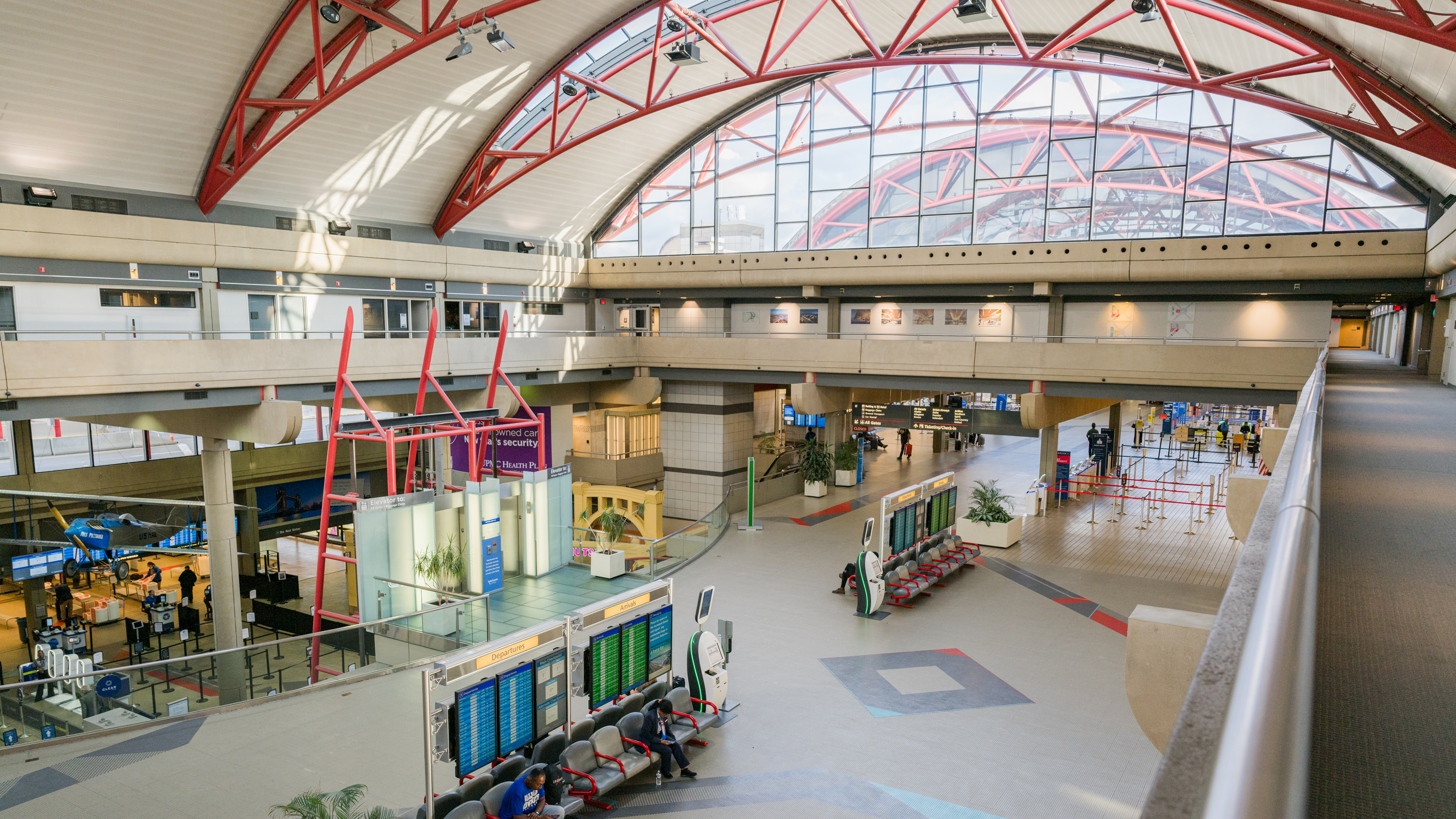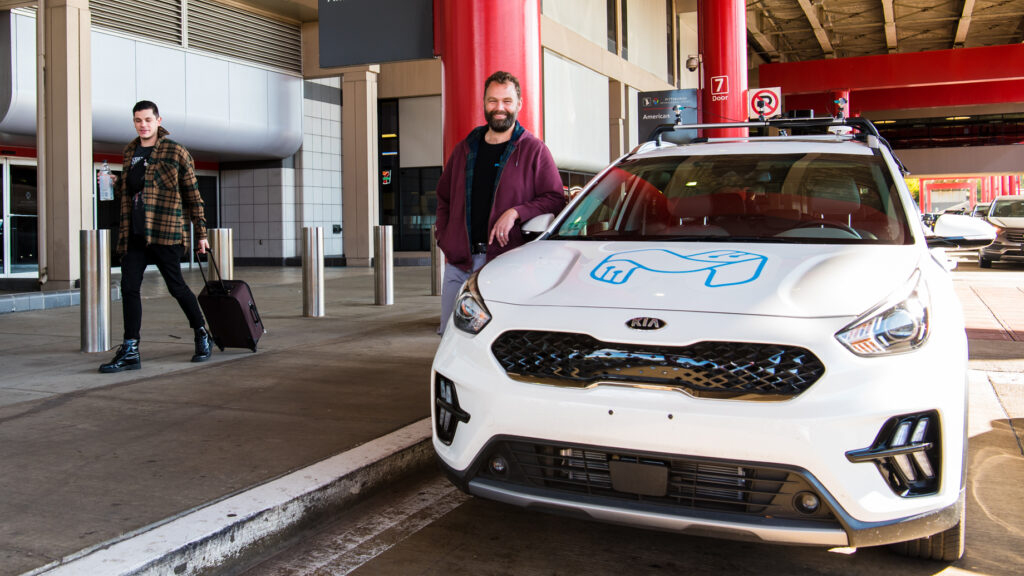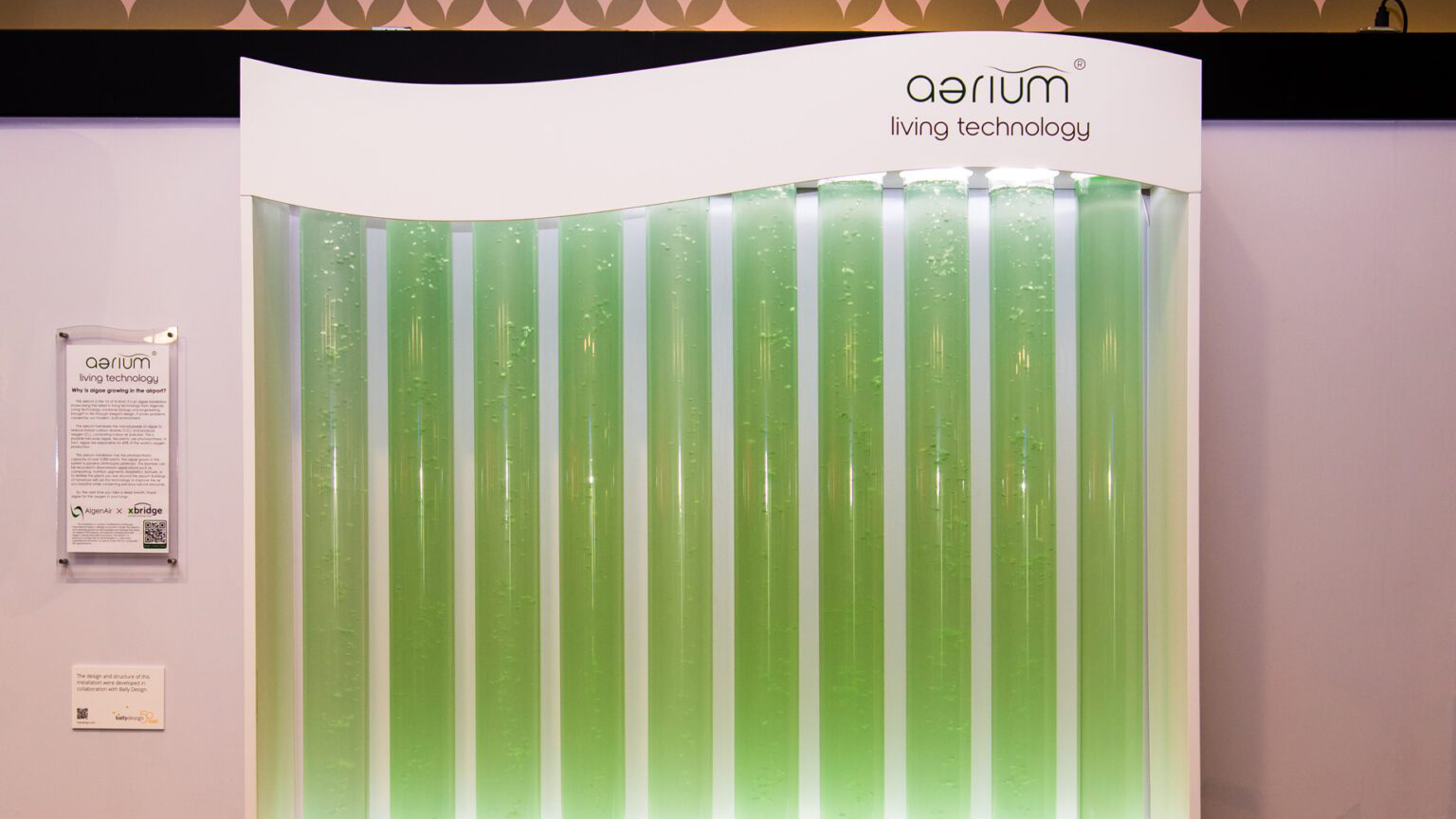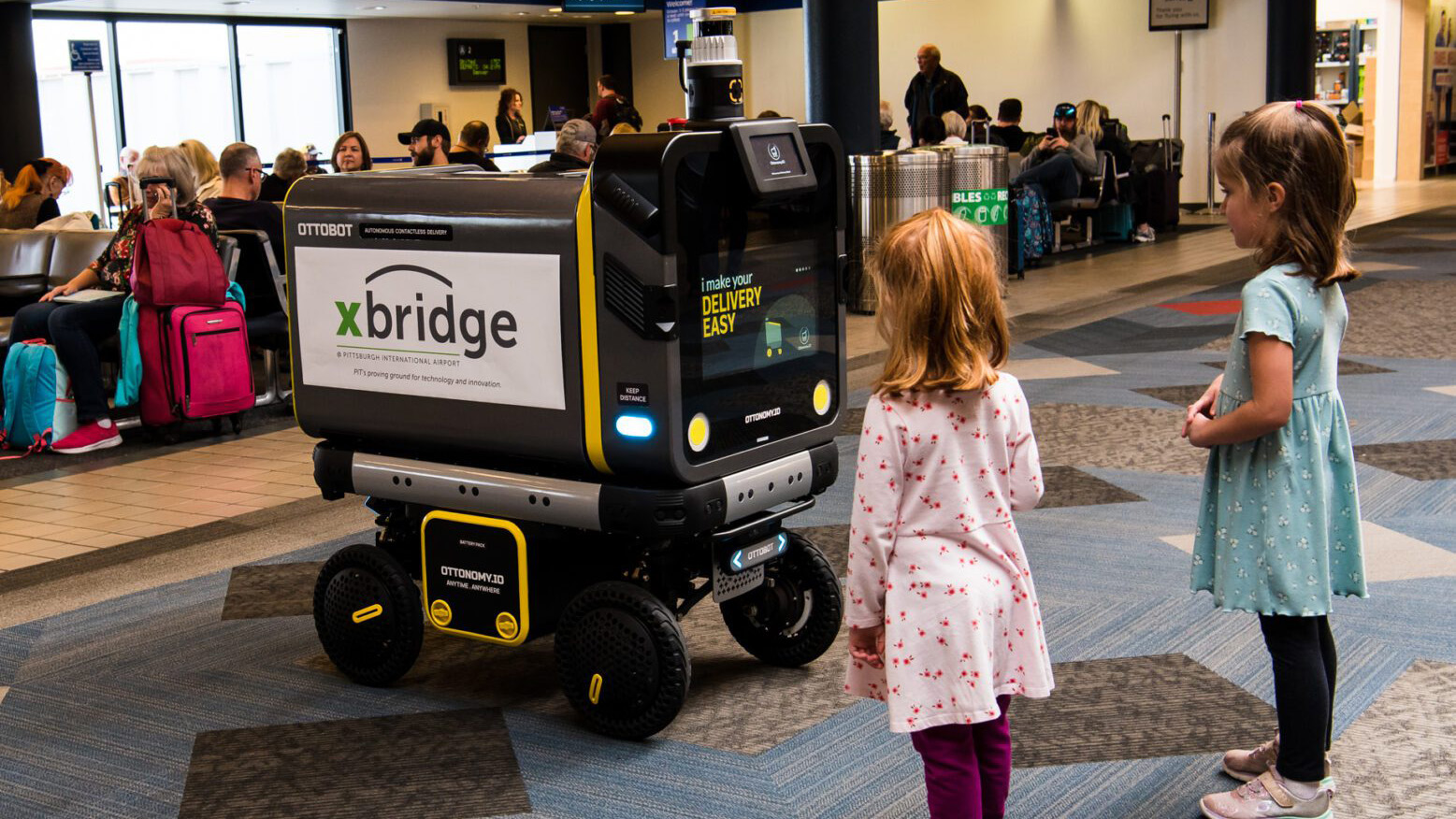With xBridge, Pittsburgh International Airport is positioning itself as a beacon for the airline industry's digital transformation voyage
The digital transformation program manages a pipeline of 100 projects in various stages of development to transform the airline industry as a whole


The patchy hues of pale blue and cream carpet that line the hallways of Pittsburgh International Airport (PIT) are dimly lit. Its vintage decor is a nod to its heyday as a major transportation hub. With four runways and 10,000-plus acres of land, the airport was once a major beacon of travel – with 100-plus direct flights taking off daily – and some 90% of passengers connecting to the rest of the US.
But turbulence following 9/11 and shifts in consumer behavior have impacted PIT over the years. At its lowest point, activity dropped to roughly 50 daily direct international flights, with bankruptcy looming at one notable stage. What followed was well over a decade of stagnation, before a turn of fortunes and fresh leadership – Christina Cassotis's appointment as CEO in 2015 – put PIT back on track. It was now chasing not only 'restoration', but evolution through digital transformation.
Today, the airport is in the midst of a major transformation project to the tune of $1.4 billion, symbolized by its new Departures terminal set to open in 2025. In 2021, PIT also became the first airport in the world to power itself with its own on-site microgrid – using solar farms and natural gas supplies. Its eco credentials are bolstered with an on-site honey production operation, with bee farms dotted around the site.
But among its most exciting projects is xBridge, a program that has set its sights on injecting innovation into the aviation industry by giving startups the perfect testbed to trial and launch innovations: the airport itself.
An airport is like a small city
For decades, the city of Pittsburgh – and the wider Allegheny County – has been on a technology-driven modernization journey, powered by an engine comprising top universities and the expansion of its AI and robotics industries.
These efforts follow economic devastation in the 1980s, triggered by the shuttering of much of the regional industry, such as steel-making, that had served as a lifeline for its people since the 1800s. Pittsburgh's reputation as a tech hub has emerged from these ashes, with a roll call of successful startups and massive infrastructure projects underlining this turnaround. When Cassotis joined PIT, she posited: why can't the airport get in on this? Thus the idea for xBridge was born.
"When you think of an airport, it's kind of like a small city," says Cole Wolfson, director of xBridge, in conversation with ITPro. "Every industry that you can think of operates within an airport. It's not just transportation, but everything from food and beverage, to security, to material handling, to logistics, to communication, to sustainability. So that means that there are opportunities for new companies and new technologies to interface within the airport to help perfect their product, or their service, or their value proposition, or whatever industry they're looking at."
Sign up today and you will receive a free copy of our Future Focus 2025 report - the leading guidance on AI, cybersecurity and other IT challenges as per 700+ senior executives
Wolfson joined xBridge three years ago with no background in aviation. Rather, he worked for an early-stage venture investment organization and had previously run a hardware accelerator in town. "When I came in here, I looked at the airport through the lens of early-stage technology companies,” he says. “And when you look around an airport through that lens, what you see is this massive resource with so many opportunities to positively impact the growth and development of technology companies, especially early-stage ones."
Presently, xBridge examines 100 individual projects. From that pipeline, PIT has so far engaged with approximately 25 projects to create a technology proof of concept.
To date, there have been three solid examples of projects that have been implemented either at PIT or elsewhere in the industry. The timeline from conception to adoption ranges from four months to two years, Wolfson adds, depending on how complicated it is and what infrastructure is required. But he insists PIT moves quickly relative to other airports.
PIT: Projects for the future
Carnegie Robotics' automated floor scrubbers

One of the earliest projects, before even Wolfson's time, centered around deploying a robotic cleaning machine developed by Carnegie Robotics – an autonomous vehicles startup based in Pittsburgh. The company outfitted the airport with a number of its self-driving SC50 floor scrubbers and when COVID-19 hit, it outfitted these robots with ultraviolet lights to kill more surface bacteria and viruses. PIT went on to buy four of these machines, with airports around the world also buying into the new technology.
Mapless AI's remote-controlled taxis

PIT started working with this startup – founded by two people who came out of the local autonomous vehicles scene – more than two years ago. Conceding that true autonomy was years away, they pivoted to remotely operated vehicles. The company’s proposition is that in the medium term, this technology has great potential value. In partnering with PIT, Mapless AI plugged into the existing rental car presence at the airport, allowing it to test its ideas in the surrounding parking lots and roads. To date, it has had success in providing a tele-operated car service to passengers.
AlgenAir's 'living' air purifier

On the baggage claim level at PIT, there sits a giant air purifier that uses algae to reduce carbon dioxide indoors and produce oxygen – combatting indoor air pollution using photosynthesis. The installation has the carbon-positive equivalent of more than 5,000 plants and can be used in composting or to fertilize plants in the airport. The project emerged from a startup named AlgenAir that built a consumer-grade air oxygenator that looked like a lava lamp but wanted to expand into the commercial space. Deploying a prototype at the airport helped to test passenger reactions, what the cleaning cycle is like, and other considerations, so it could figure out whether there was an opportunity to deploy the 'living machine' at scale.
A unique model for digital transformation
"The secret sauce of what we do at xBridge is really about process, more than anything else,” says Wolfson. “We come out of this early-stage world and so we have a large network of universities, accelerators, venture interest, venture capital groups, et cetera. So essentially, we went out to them and we said: here's what we're doing here, have you got any companies that would be interested in this?
“And every single one of them had a couple – because the biggest hurdle that early-stage tech companies have is finding that first deployment site, and that first customer.”
Wolfson has examined how other airports run similar projects, noting that some have ‘innovation studios’ with a staff of around 100 people who go out into the airport and solicit ideas to use internally. There are also models in which an airport builds an incubator, or an accelerator, with capital or without external capital. Some models also see airports that solicit need and then go out and find solutions externally to bring in.
"Everybody does different ones, and there's certainly some overlap. What I have found is that we've gotten a lot of attention because nobody really does it this way," he adds.

The model xBridge uses sees it curating this vast pipeline of projects, taking time to evaluate which candidates pass the "smell test". Then they speak with the project organizers and perform due diligence on the proposal – before xBridge representatives approach a consortium of internal stakeholders spanning representatives of every major kind of business unit across the airport.
Rather than asking whether or not they think it's a "good idea", they ask "Will it break the airport?" explains Wolfson. That's because the knee-jerk response is to avoid change and taking risks, which xBridge avoids by lowering the bar. "It's not going to hurt anybody to try it," he adds.
From there, xBridge evaluates the technology, deciding whether it does what it was supposed to, and then seeks a business unit or partner airline to match with the project to test its value proposition.
"We're working as stewards with that customer to implement that project,” Wolfson explains. “Then we evaluate it again, and then we either bury it or we hand it off to that business unit or that partner to decide to scale."
Overcoming hurdles to successful modernization
There are two key challenges that Wolfson encountered after joining PIT's xBridge project. The first is that the responsibility for different processes and operations generally are so vastly distributed and involve a large number of parties. There's the airport itself, alongside the individual airlines, baggage handles, the ground crew, the concessionaires – and more. So it's tricky when you're trying to do something new.
Airports are also highly regulated environments, so there are easy places and hard places to do new things. "In the easy places, a lot of stuff has been done, and so it comes down to how do you do it in the hard places? And there are even more stakeholders when you get into that group," Wolfson says.
The group is working hard to overcome these hurdles and achieve success. But what does that actually mean? One is the number of projects that you push through, Wolfson says, the other is around adoption. "How many of these [projects] have found a place within the industry in some way or another?"
RELATED WHITEPAPER

Ultimately, though, Wolfson isn't one for metrics alone.
"Those mean something, but I don't really use them, because anecdotally there are a lot of interesting things happening that can't be necessarily quantified. I could talk about 'continued engagement' but what does that really mean?
“I think more broadly if you look at the partners that we're engaged with, the ways in which we're pushing various aspects of the industry forward, the way that we're getting outside groups to spend more time with Pittsburgh companies in order to figure out how to deploy these technologies – those are soft metrics. But they certainly are metrics that if you look at, you can see the value."

Keumars Afifi-Sabet is a writer and editor that specialises in public sector, cyber security, and cloud computing. He first joined ITPro as a staff writer in April 2018 and eventually became its Features Editor. Although a regular contributor to other tech sites in the past, these days you will find Keumars on LiveScience, where he runs its Technology section.

